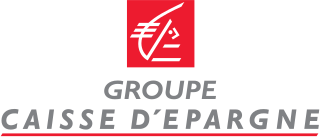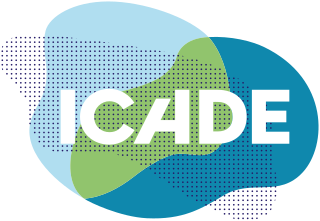Related Research Articles
The money market is a component of the economy that provides short-term funds. The money market deals in short-term loans, generally for a period of a year or less.
A money market fund is an open-end mutual fund that invests in short-term debt securities such as US Treasury bills and commercial paper. Money market funds are managed with the goal of maintaining a highly stable asset value through liquid investments, while paying income to investors in the form of dividends. Although they are not insured against loss, actual losses have been quite rare in practice.
An institutional investor is an entity that pools money to purchase securities, real property, and other investment assets or originate loans. Institutional investors include commercial banks, central banks, credit unions, government-linked companies, insurers, pension funds, sovereign wealth funds, charities, hedge funds, real estate investment trusts, investment advisors, endowments, and mutual funds. Operating companies which invest excess capital in these types of assets may also be included in the term. Activist institutional investors may also influence corporate governance by exercising voting rights in their investments. In 2019, the world's top 500 asset managers collectively managed $104.4 trillion in Assets under Management (AuM).

The Ontario Teachers' Pension Plan Board is an independent organization responsible for administering defined-benefit pensions for school teachers of the Canadian province of Ontario. Ontario Teachers' also invests the plan's pension fund and it is one of the world's largest institutional investors, acting as a partner organization of the World Economic Forum. The plan is a multi-employer pension plan, jointly sponsored by the Government of Ontario and the Ontario Teachers' Federation.

The Caisse de dépôt et placement du Québec is an institutional investor that manages several public and parapublic pension plans and insurance programs in the Canadian province of Quebec. It was established in 1965 by an act of the National Assembly, under the government of Jean Lesage, as part of the Quiet Revolution, a period of social and political change in Quebec. It is the second-largest pension fund in Canada, after the Canada Pension Plan Investment Board. It was created to manage the funds of the newly created Quebec Pension Plan, a public pension plan that aimed to provide financial security for Quebecers in retirement. The CDPQ’s mandate was to invest the funds prudently and profitably while also contributing to Quebec’s economic development. As of December 31, 2023, the CDPQ managed assets of C$434 billion, invested in Canada and elsewhere. The CDPQ is headquartered in Quebec City at the Price building and has its main business office in Montreal at the Édifice Jacques-Parizeau.
A structured investment vehicle (SIV) is a non-bank financial institution established to earn a credit spread between the longer-term assets held in its portfolio and the shorter-term liabilities it issues. They are simple credit spread lenders, frequently "lending" by investing in securitizations, but also by investing in corporate bonds and funding by issuing commercial paper and medium term notes, which were usually rated AAA until the onset of the financial crisis. They did not expose themselves to either interest rate or currency risk and typically held asset to maturity. SIVs differ from asset-backed securities and collateralized debt obligations in that they are permanently capitalized and have an active management team.

Groupe Caisse d'épargne was a group of French savings banks that were converted into cooperative banks by legislation enacted in 1999. Its roots went back to the founding in 1818 of the Caisse d'Épargne et de Prévoyance de Paris, initiated by Benjamin Delessert and the Duke of La Rochefoucauld-Liancourt.
The Master Liquidity Enhancement Conduit (MLEC), also known as the Super SIV, was a plan announced by three major banks based in the United States on October 15, 2007, to help alleviate the subprime mortgage financial crisis. Citigroup, JPMorgan Chase, and Bank of America created the plan in an effort to stave off financial damage.
The shadow banking system is a term for the collection of non-bank financial intermediaries (NBFIs) that legally provide services similar to traditional commercial banks but outside normal banking regulations. S&P Global estimates that, at end-2022, shadow banking held about $63 trillion in financial assets in major jurisdictions around the world, representing 78% of global GDP, up from $28 trillion and 68% of global GDP in 2009.

The Caisse des dépôts et consignations is an idiosyncratic French public financial institution created in 1816, often referred to as the investment arm of the French State. It is defined in the French Monetary and Financial Code as a "public group serving the public interest" and a "long-term investor". Its governance framework places it under the control of the Parliament.
This article provides background information regarding the subprime mortgage crisis. It discusses subprime lending, foreclosures, risk types, and mechanisms through which various entities involved were affected by the crisis.
The interbank lending market is a market in which banks lend funds to one another for a specified term. Most interbank loans are for maturities of one week or less, the majority being overnight. Such loans are made at the interbank rate. A sharp decline in transaction volume in this market was a major contributing factor to the collapse of several financial institutions during the financial crisis of 2007–2008.
Hudson Castle Group Inc. is a private, independent company formed in 1996 and is a leading provider of debt financing to the global financial institutions sector. Hudson Castle’s target market includes leading commercial banks, investment banks and insurance companies in the U.S. and Western Europe. The firm does not seek publicity and the makeup of its management team is unknown.

Icade SA is a multinational real estate investment trust (REIT) that is headquartered in Issy-les-Moulineaux, Paris, France and is a subsidiary of Caisse des dépôts et consignations. The name is an abbreviation of Immobilière Caisse des Dépôts. It invests in various types of properties including health care, offices, business parks, housing and public facilities. It is one of the largest property businesses of France. Icade became the leading commercial real-estate company for offices and business parks in the Ile-de-France region, is the largest REIT in healthcare sector of France and a key partner of major French cities. The main shareholders are the parent organization and Crédit Agricole.
Daniel Fournier is a Canadian businessman in the province of Quebec. He was chairman and chief executive officer of Ivanhoé Cambridge, a real estate subsidiary of Caisse de dépôt et placement du Québec, from June 2010 to October 2019. He has also run for the Canadian House of Commons and written on Canadian federalism.
United States policy responses to the late-2000s recession explores legislation, banking industry and market volatility within retirement plans.
An asset-backed commercial paper program is a non-bank financial institution that issues short-term liabilities, commercial paper called asset-backed commercial paper (ABCPs), to finance medium- to long-term assets.

The Réseau express métropolitain is a light metro rapid transit system in Greater Montreal, Quebec, Canada. It consists of five stations and connects Downtown Montreal with the suburb of Brossard. Extensions to the western Montreal suburbs and Montréal–Trudeau International Airport are under construction and will open in two stages in 2025 and 2027. A portion of the route was taken over from the Exo commuter rail Deux-Montagnes line and is being converted to light metro standards.

Nathalie Palladitcheff is a French business executive who was the President and the first female Chief Executive Officer of Ivanhoé Cambridge, the real estate subsidiary of the Caisse de dépôt et placement du Québec (CDPQ), which owns C$77 billion in real estate assets.

The REM de l'Est is an abandoned project of the eastward expansion of the Réseau express métropolitain (REM), the developing light metro network serving the metropolitan area of Montreal, Quebec, Canada. Announced on December 15, 2020, the project was to be built by CDPQ Infra, the institutional investor behind the original REM and the infrastructure subsidiary of Quebec's public pension fund manager, the Caisse de dépôt et placement du Québec (CDPQ).
References
- ↑ Covitz, Daniel, Nellie Liang and Gustavo Suarez (2009). The conduit is referred to as a structured investment vehicle. The evolution of a financial crisis: Panic in the asset-backed commercial paper market. Division of Research & Statistics and Monetary Affairs, Federal Reserve Board.
- ↑ "The Fed - Commercial Paper Rates and Outstanding Summary". www.federalreserve.gov. Retrieved 2023-05-24.
- ↑ Acharya, Viral, Philipp Schnabl and Gustavo Suarez (2010). Securitization Without Risk Transfer, September 2010, NBER Working Paper No. 15730
- 1 2 3 Acharya, Viral, Philipp Schnabl(2010). Do Global Banks Spread Global Imbalances? Asset-Backed Commercial Paper during the Financial Crisis of 2007–09. IMF Economic Review, 58(1), 37-73.
- 1 2 3 Fortin, Pierre (2014-03-28). "Pierre Fortin : Cinq ans après, le point sur l'annus horribilis de la Caisse de dépôt". L’actualité (in Canadian French). Retrieved 2023-05-24.
- ↑ The Fundamentals of Asset-Backed Commercial Paper. Structured Finance Special Report. http://www.imf.org/external/np/seminars/eng/2010/mcm/pdf/rutan1.pdf
- ↑ Kalemli-Ozcan, Sebnem, Elias Papaioannou and Fabrizio Perri(2012). Global banks and crisis transmission. Journal of International Economics.
- ↑ Bérubé, Gérard (2009-02-28). "Restructuration des PCAA - Crawford donne le crédit à Rousseau". Le Devoir (in French). Retrieved 2023-05-24.
- ↑ Bérubé, Gérard (2012-11-29). "Perspectives - L'influent gouverneur". Le Devoir (in French). Retrieved 2023-05-24.
- 1 2 "Des papiers commerciaux payants !". Le Devoir (in French). 2014-03-07. Retrieved 2023-05-24.
- ↑ ABCP fiasco’s silver lining. http://business.financialpost.com/2013/02/18/abcp-fiascos-silver-lining/
- ↑ Desjardins, François (2009-01-24). "PCAA: un cauchemar logistique prend fin". Le Devoir (in French). Retrieved 2023-05-24.
- ↑ "Des cowboys?". Le Devoir (in French). 2014-09-11. Retrieved 2023-05-24.
- ↑ Desjardins, François (2013-12-12). "Papier commercial - Des titres vendus presque à leur pleine valeur". Le Devoir (in French). Retrieved 2023-05-24.
- ↑ "BlackRock Auctions C$1.5 Billion of Restructured Short-Term Debt". Bloomberg.com. 2014-03-13. Retrieved 2023-05-24.
- ↑ Nouveau déblocage pour la Caisse de dépôt. https://www.ledevoir.com/economie/actualites-economiques/414435/papier-commercial-nouveau-deblocage-pour-la-caisse-de-depot
- ↑ "La débâcle de 2008 est de l'histoire ancienne pour la Caisse de dépôt". 4 April 2014.